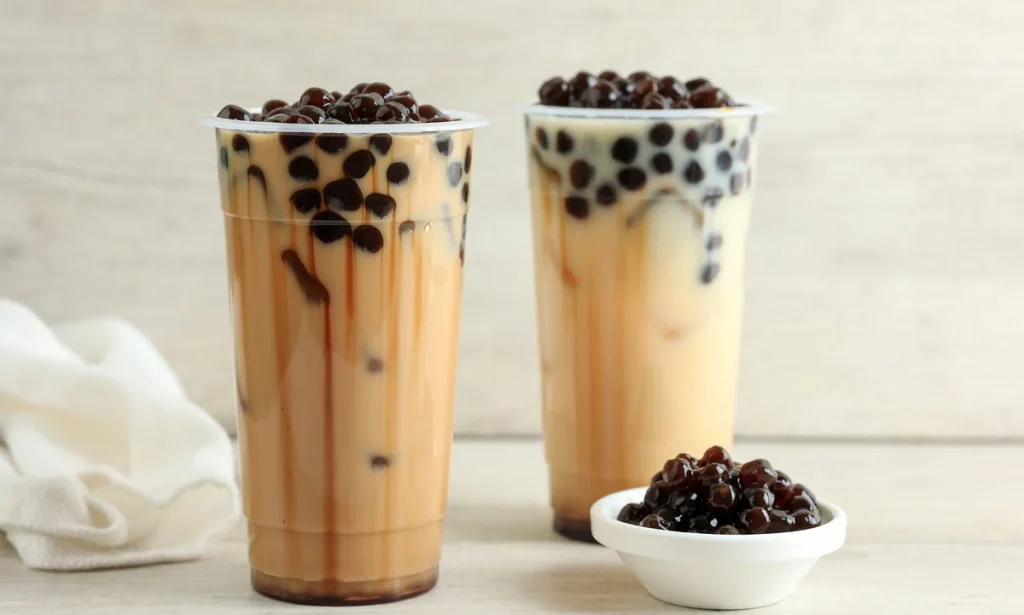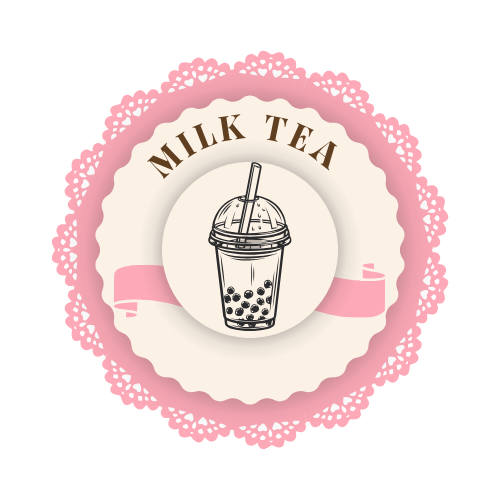Blog
Bubble Tea vs Milk Tea: What’s the Difference?
Bubble tea and milk tea are two terms that are often used interchangeably, but they actually refer to different beverages. While both originate from Asia and share tea as a primary ingredient, their preparation, ingredients, and presentation make them distinct. Understanding the differences between bubble tea and milk tea not only deepens your appreciation for these popular drinks but also helps you choose the perfect beverage for your taste.
In this article, we’ll explore the origins, ingredients, preparation methods, and cultural significance of bubble tea and milk tea, shedding light on what sets them apart.
1. Origins of Bubble Tea and Milk Tea
The history of bubble tea and milk tea can provide insights into their differences.

Milk Tea: A Global Classic
Milk tea has a long history and is popular in various cultures worldwide. Its origins can be traced back to traditional tea-drinking practices in Asia and Europe.
- Asian Milk Tea: Countries like China, India, and Japan have a rich history of combining tea with milk. For instance, masala chai in India is a spiced milk tea, while Hong Kong-style milk tea uses evaporated or condensed milk for a creamy texture.
- European Influence: The British tradition of adding milk to black tea has also influenced modern milk tea recipes.
Bubble Tea: A Taiwanese Innovation
Bubble tea, on the other hand, is a relatively recent invention that originated in Taiwan during the 1980s. It is believed to have been created when someone added chewy tapioca pearls to sweetened milk tea, creating a textured and flavorful drink. Today, bubble tea has evolved into a customizable beverage with countless flavor and topping options.
2. What Is Milk Tea?
Milk tea is a straightforward beverage that combines tea with milk or a milk substitute. It is known for its creamy texture and balanced flavor.
Basic Ingredients of Milk Tea:
- Tea Base: Typically black tea, green tea, or oolong tea.
- Milk: Can be fresh milk, evaporated milk, condensed milk, or non-dairy alternatives like almond, soy, or oat milk.
- Sweetener: Optional, depending on personal preference. Common sweeteners include sugar, honey, or syrup.
Variations of Milk Tea Around the World:
- Masala Chai (India): A spiced milk tea with ingredients like cardamom, ginger, and cloves.
- Thai Milk Tea (Thailand): Made with black tea, sugar, and condensed milk, often served over ice.
- Hong Kong-Style Milk Tea (Hong Kong): A blend of strong black tea and evaporated or condensed milk.
Milk tea is typically consumed without additional toppings or textures, focusing on the flavor balance between tea and milk.
3. What Is Bubble Tea?
Bubble tea, also known as boba tea, takes milk tea to the next level by adding unique toppings and flavors. It is highly customizable, offering a multi-sensory drinking experience.

Basic Components of Bubble Tea:
- Tea Base: Similar to milk tea, bubble tea often uses black, green, or oolong tea as the base.
- Milk: Dairy or non-dairy options, depending on the customer’s preference.
- Sweetener: Customizable sweetness levels, from unsweetened to extra sweet.
- Toppings: The defining feature of bubble tea is its toppings, which add texture and flavor. The most popular topping is tapioca pearls, but others include popping boba, grass jelly, and pudding.
Popular Bubble Tea Variations:
- Classic Milk Tea with Boba: The original bubble tea, combining sweetened milk tea with chewy tapioca pearls.
- Fruit Teas: Non-dairy bubble tea options featuring fruity flavors like mango, lychee, or passionfruit, often paired with popping boba.
- Brown Sugar Boba Milk: A rich and indulgent version with caramelized brown sugar tapioca pearls and fresh milk.
4. Key Differences Between Bubble Tea and Milk Tea
While both beverages share a common base, several factors distinguish them:
| Aspect | Milk Tea | Bubble Tea |
|---|---|---|
| Origins | Traditional tea cultures globally | Invented in Taiwan in the 1980s |
| Key Ingredients | Tea, milk, sweetener | Tea, milk, sweetener, toppings (e.g., boba) |
| Texture | Smooth and creamy | Varied textures from toppings like boba |
| Customization | Limited to tea and milk choice | Highly customizable with flavors and toppings |
| Popularity | Widespread in traditional tea-drinking regions | A global phenomenon with dedicated shops |
5. The Role of Toppings in Bubble Tea
One of the most striking differences between bubble tea and milk tea is the addition of toppings in bubble tea. These toppings provide unique textures, turning the drink into a snack-like experience.
Popular Toppings in Bubble Tea:
- Tapioca Pearls (Boba): Chewy, slightly sweet spheres made from cassava starch.
- Popping Boba: Juice-filled pearls that burst in your mouth.
- Grass Jelly: A soft, herbal jelly with a mild flavor.
- Pudding: Creamy, custard-like topping in flavors like egg, taro, or mango.
- Cheese Foam: A savory-sweet layer made from cream cheese and milk.
Milk tea, by contrast, typically lacks these additional elements, focusing solely on the tea-milk-sweetener blend.
6. Presentation and Customization
Another key difference lies in the way these drinks are prepared and presented.
Milk Tea:
- Typically served in a simple cup or glass.
- Limited customization, focusing on tea strength, milk type, and sweetness level.
- Often served hot or cold, depending on regional traditions.
Bubble Tea:
- Served in transparent cups with a sealed lid, often with colorful straws for sipping and scooping toppings.
- Highly customizable, allowing customers to choose tea base, milk type, sweetness, ice level, and toppings.
- Known for its vibrant and playful appearance, often featuring layered colors or aesthetic garnishes.
7. Cultural Impact
Both bubble tea and milk tea have cultural significance, but they play different roles in modern society.
Milk Tea:
- A staple in traditional tea-drinking cultures, often associated with comfort and daily rituals.
- Consumed as part of meals or enjoyed during breaks, emphasizing relaxation and simplicity.
Bubble Tea:
- A symbol of youth culture and innovation, appealing to younger generations.
- Often consumed as a social or recreational activity, with bubble tea shops serving as trendy gathering spots.
- Highly popular on social media for its visually striking presentations.
8. Which One Should You Choose?
The choice between bubble tea and milk tea depends on your preferences and mood:
- Choose Milk Tea If: You prefer a classic, straightforward beverage with a smooth and creamy texture.
- Choose Bubble Tea If: You enjoy playful textures, unique flavors, and the ability to customize every aspect of your drink.
Conclusion
While bubble tea and milk tea share common roots, they are distinct beverages with unique characteristics. Milk tea is a timeless classic, focusing on simplicity and balance, while bubble tea offers an interactive and customizable experience. Whether you’re in the mood for a comforting cup of traditional milk tea or an adventurous bubble tea creation, both options provide delicious ways to enjoy tea.
Understanding their differences allows you to appreciate the artistry behind each drink and make the perfect choice to suit your taste. So, which one will you try next?


